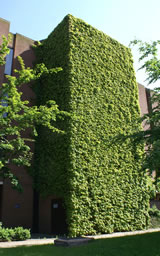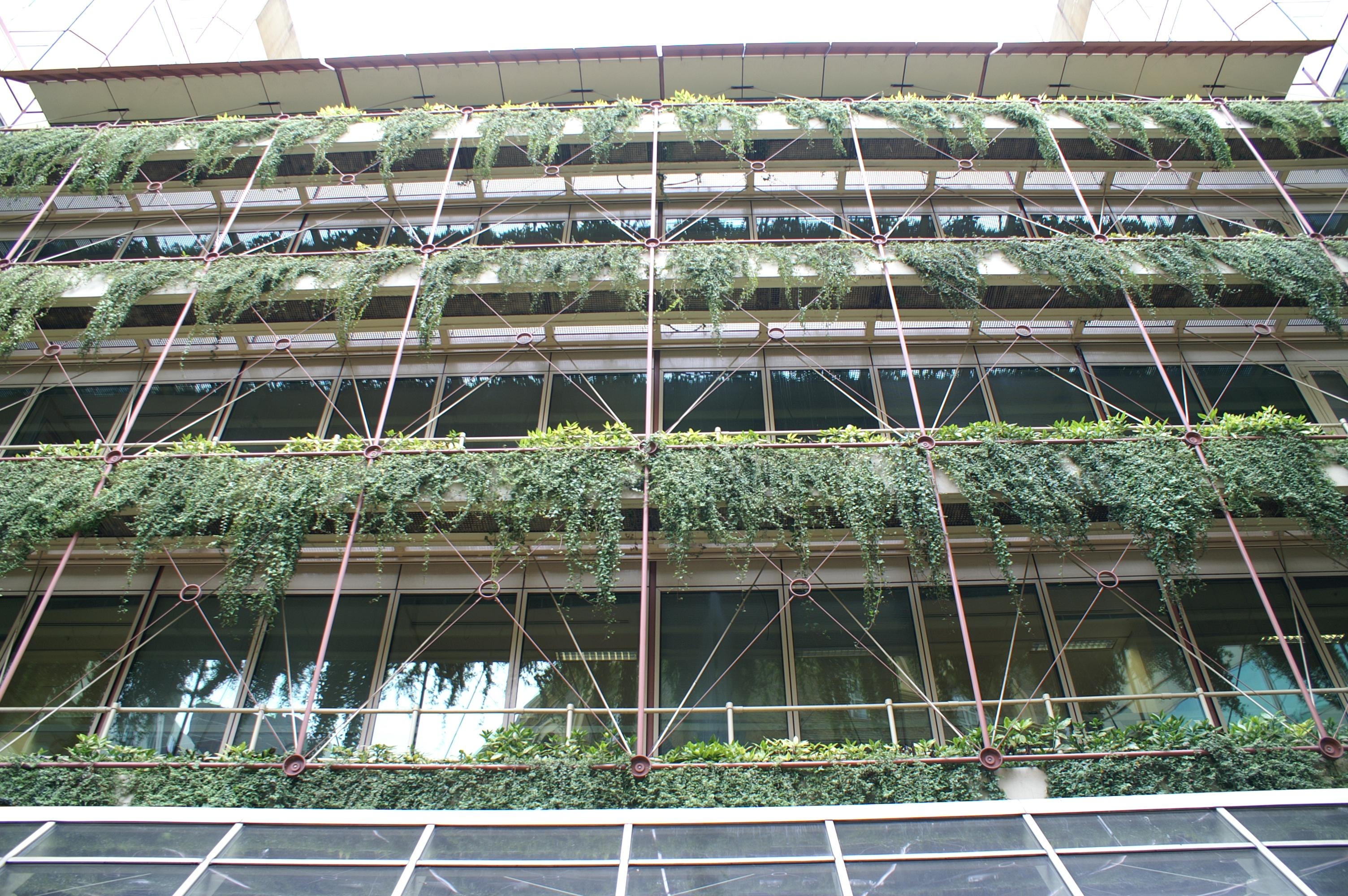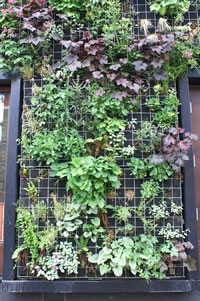

home > green walls > introduction
Introduction
Climbing plants have been cultivated on buildings since antiquity, bringing colour and interest to buildings. However, the use of large-scale green wall systems, incorporating support structures such as high tensile steel cables for climbing plants or cladding systems into which plants can be planted, is still a relatively new concept.
Modern green wall techniques generally fall into one of the three categories described below.
Walls with climbing plants
Climbing plants can be either supported by the wall itself, a structure attached to the wall or a self-standing structure. Self-supporting climbing plants use either tiny roots that exploit the rough surfaces and small cracks of building materials or naturally adhesive tendrils. Examples of self-supporting climbers include ivy, Virginia creeper, climbing hydrangea and climbing varieties of eunonymus. Twining climbers extend shoots that twist around support structures, and include species such as Russian vine, Chinese wisteria and honeysuckles.
Hanging walls
Hanging walls are created by allowing plants to hang down from planters suspended from a height e.g. over a parapet.
The use of a hanging wall removes the need for a support structure and can be an effective solution for greening high walls. Anchorage is an important consideration for hanging walls.
Walls with plants growing within them

Dry stone walls offer an accidental example of this type of greening, where plants such as wall pennywort, wall rue and wall flower are able to grow within the interstices of the wall.
However, designers are now taking things a step further by the deliberate inclusion of plants in walls, including the use of structures attached to the wall into which plants can be planted. Such walls can be visually dramatic.